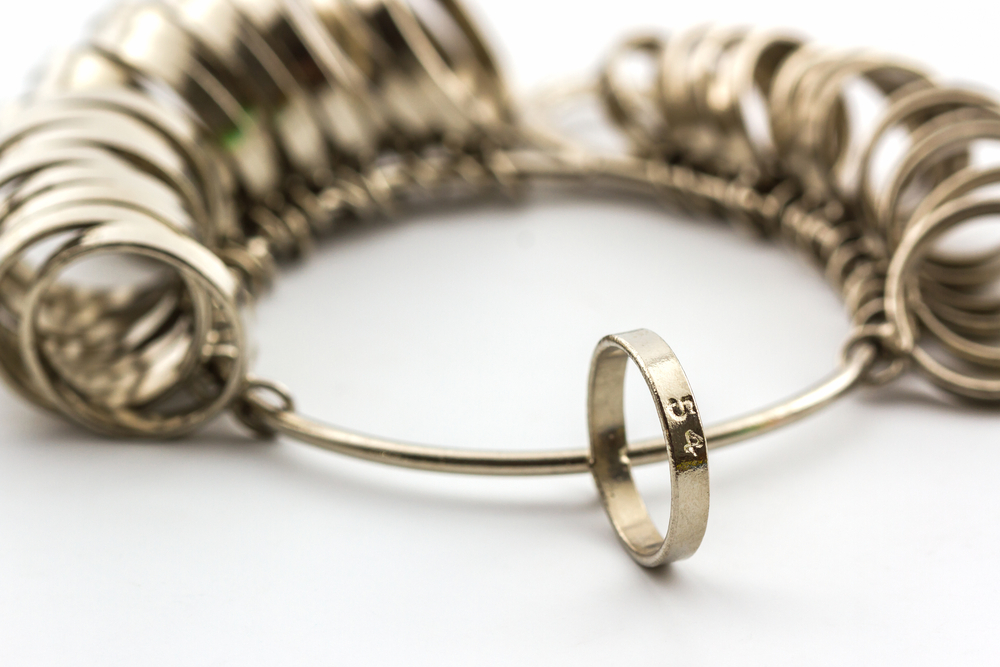Ring sizing can be difficult because everyone’s finger is shaped differently. Some are wider, some are longer and some have larger knuckles that can make wearing a traditional metal ring uncomfortable. One of the benefits of silicone rings is there is that the flexibility of the material allows for more wiggle room than a metal ring. Many people choose to wear a silicone ring primarily for the added comfort it provides.

Those with wider fingers don’t have to worry about a ring rubbing against other fingers and causing irritation. People with shorter fingers don’t have to worry about a wider ring making it difficult to bend the ring finger. Anyone with larger knuckles won’t have to worry about having to get a size large enough to fit over the knuckle. With that in mind, it is still important to get the most comfortable size for your finger.
Measuring Your Finger
To figure out your ring size, it can be easiest to use a flexible measuring tape commonly used when sewing and determine the circumference of your finger in inches or millimeters. If you don’t have a flexible measuring tape, you can always twist a piece of string around the base of your finger, cut it to the size a ring would need to be and then measure the piece of string with a ruler or regular measuring tape.
Determine the Correct Standard of Measurement
There are many different manufacturers of silicone rings, and they use a variety of measurement standards. Some use actual metrics such as inches or millimeters. Others use one of the five sizing methods most common around the world. When looking at the details of a specific ring, look to see if the manufacturer mentions which method it uses for sizing. There can be a large difference depending on which method a manufacturer employs, so avoid estimating your size or assuming the manufacturer uses the sizing method you’re used to. For example, a size eight ring in the United States would be a size 17 in Italy. If your ring is coming from Italy and you order a size eight, you will most likely be unable to get it on.
Common Sizing Methods
In the United States, Canada and Mexico, rings are typically made in numerical sizes and half sizes, similar to the method used to size shoes. However, in the United Kingdom, Australia, Ireland and New Zealand, sizes are alphabetical rather than numerical. In France, ring size is measured by the millimeter circumference of the inside of the ring. German companies also use millimeters, but usually measure by the diameter of the inside of the ring. Ring sizes in Italy, Spain, the Netherlands and Sweden are numeric but follow a less structured pattern.
Converting Sizes Between Methods
International sizing charts can be found online and in most cases are fairly accurate. It is crucial to use a chart that includes both your known ring size and the size you need to convert to. For example, if you know your ring size in the United States is a 10, and the ring you’re looking to buy is sized using the French method, make sure the chart has both the United States sizes and the corresponding French sizes listed.